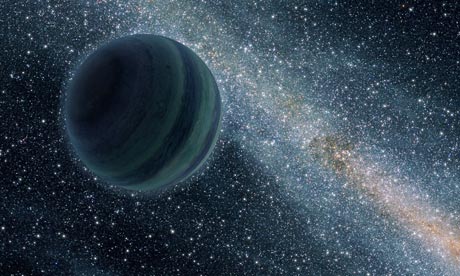
Astronomers have found a clutch of planets that wander alone through interstellar space. The discovery of the objects, which do not orbit any star, will help scientists better understand how planetary systems form and evolve.
The 10 free-floating planets are thousands of light years in the direction of the central bulge of the Milky Way, towards the constellation of Sagittarius. Their masses and compositions are thought to be equivalent to Jupiter and Saturn – mainly hydrogen and helium with trace amounts of heavier elements.
“We expect that they were formed around stars and then, during the later stages of planet formation, they get ejected, primarily due to interactions with other planets,” said Daniel Bennett, an astronomer at the University of Notre Dame. His team’s results were published on Wednesday in Nature.
More than 500 exoplanets have been detected in just over a decade of hunting by scientists and the vast majority of these are gravitationally bound to a star, orbiting it in the way the planets in the solar system orbit the Sun. Free-floating planets have been reported before but only in regions of space where stars are already forming.
The latest discovery shows that free-floating planets exist in large numbers in the emptiest parts of space, with no stars within a distance at least 10 times that between the Sun and the Earth. Bennett estimated that there are around 1.8 times as many of these free-floating Jupiter-sized giant planets as there are stars in the galaxy. “That’s a bit more than people had expected,” he said.
“Our survey is like a population census – we sampled a portion of the galaxy and, based on these data, can estimate overall numbers in the galaxy,” said Bennett. “The survey is not sensitive to planets less massive than Jupiter and Saturn, but theories suggest that lower-mass planets like Earth should be ejected from their stars more often and are thus more common that free-floating Jupiters.”
Continue reading on the Guardian website here.
The original Peer-reviewed paper published in Nature can be found here.
Phil Plait, the Bad Astronomer blogger, writes about this and its implications in an artitle entitled “The galaxy may swarm with billions of wandering planets“, so you might wish to chck that out also.